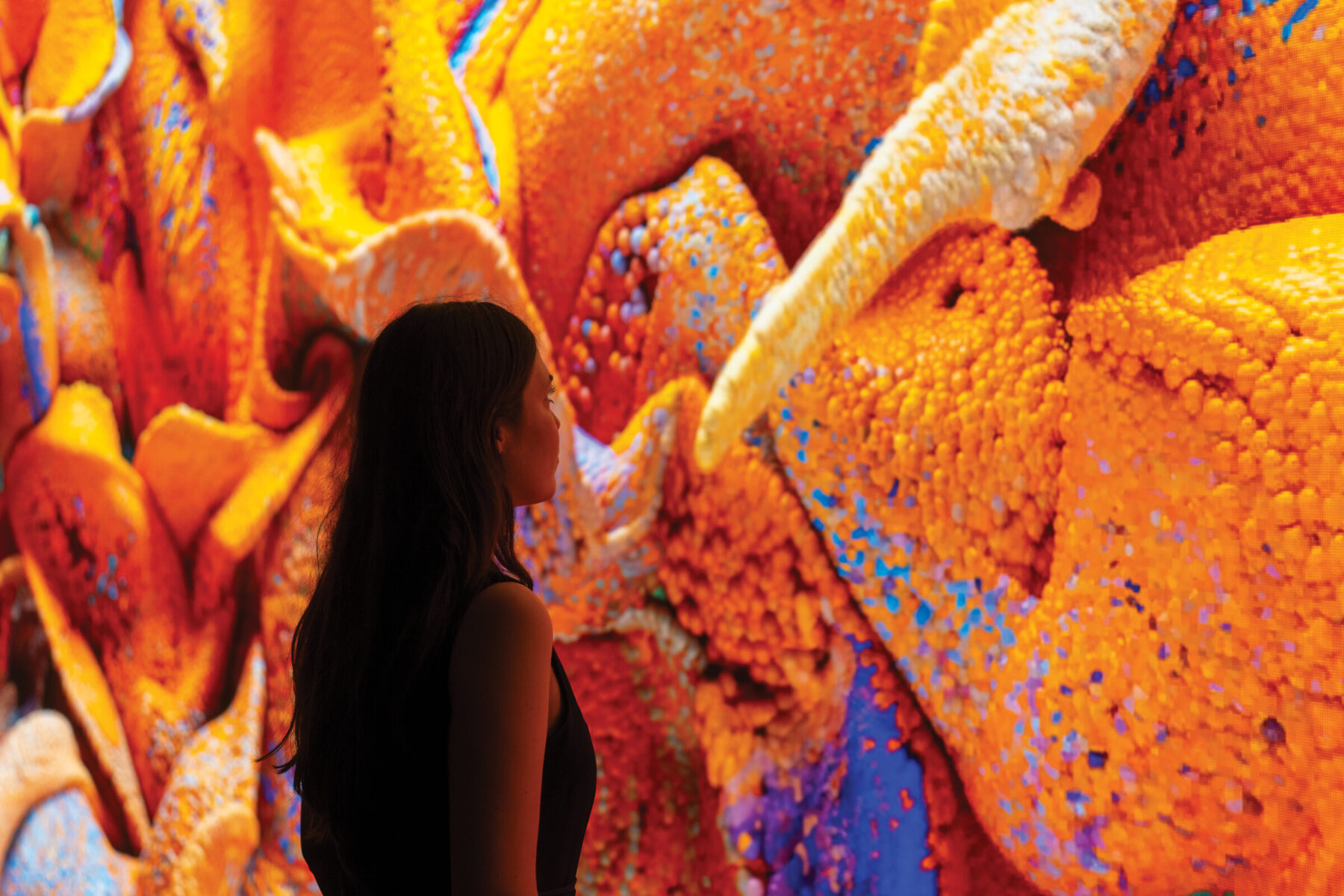What Can Artificial Intelligence Learn From Nature?

Refik Anadol Studio in Los Angeles maintains a research practice centered around discovering and developing novel approaches to data narratives and machine intelligence. Since 2014, the studio has been working at the intersection of art, science, and technology to advance creativity and imagination using big data while also investigating the architecture of space and perception.
To explore how the merging of human intuition and machine precision can help reimagine and even restore environments, the studio’s generative artificial intelligence project, the Large Nature Model (LNM), gathered more than a half billion data points about the fauna, flora, fungi, and landscapes of the world’s rainforests. These data are ethically sourced from publicly available archives in collaboration with the Smithsonian Institution, National Geographic Society, and London’s Natural History Museum.
In addition to working with existing image and sound archives in public domains and collaborating with renowned institutions, studio director Refik Anadol and his team ventured into rainforests in Amazonia, Indonesia, and Australia. They employed technologies such as LiDAR and photogrammetry, and captured ambisonic audio and high-resolution visuals to represent the essence of these ecosystems. With support from Google Cloud and NVIDIA, the team is processing this vast amount of data and plans to visit thirteen more locations around the world, developing a new understanding of the natural world through the lens of artificial intelligence.
The team envisions generative reality as a complete fusion of technology and art, where AI is used to create immersive environments that integrate real-world elements with digital data. “Our vision for the Large Nature Model goes beyond being a repository or a creative research initiative,” says Anadol. “It is a tool for insight, education, and advocacy for the shared environment of humanity.” The LNM seeks to promote awareness about environmental concerns and stimulate inventive solutions by blending art, technology, and nature. The team trains the models to produce realistic artificial sounds and images, and showcases these outputs in art installations, educational programs, and interactive experiences.
Anadol sees the LNM’s potential to enrich society’s understanding and appreciation of nature as well as to supplement existing art therapy methods. Making the calming effects of nature available to people, even when they are unable to access natural environments directly, can be particularly beneficial in urban settings or for people with limited mobility.
In the future, the intersection of technology, art, and nature will become increasingly vital. Projects like the LNM exemplify how artificial intelligence might serve as a powerful tool for environmental advocacy, education, and creative expression. As the integration of sensory experiences and generative realities continues to push the boundaries of what is possible, the studio hopes to inspire collective action and a deeper appreciation for the environment.




